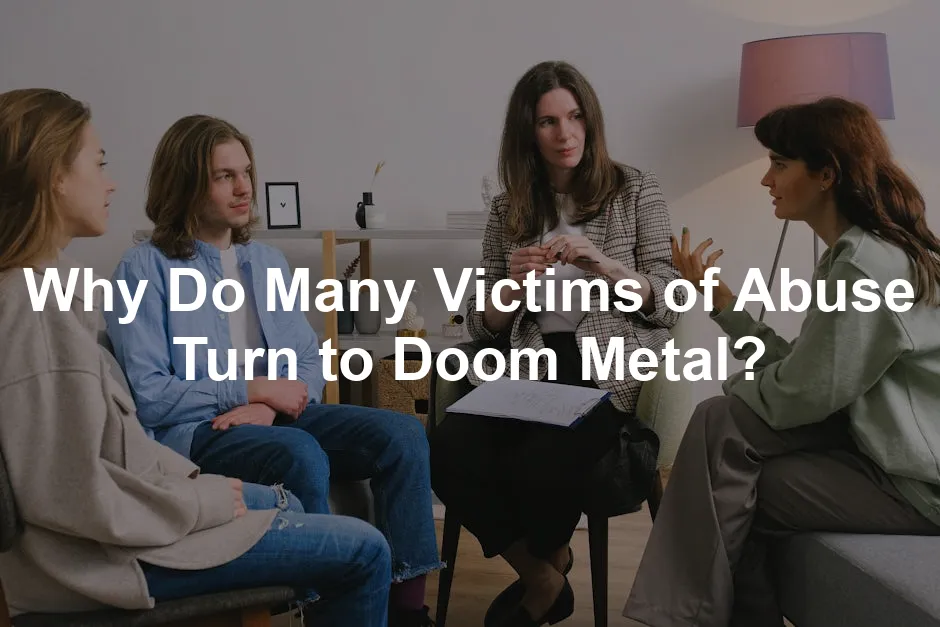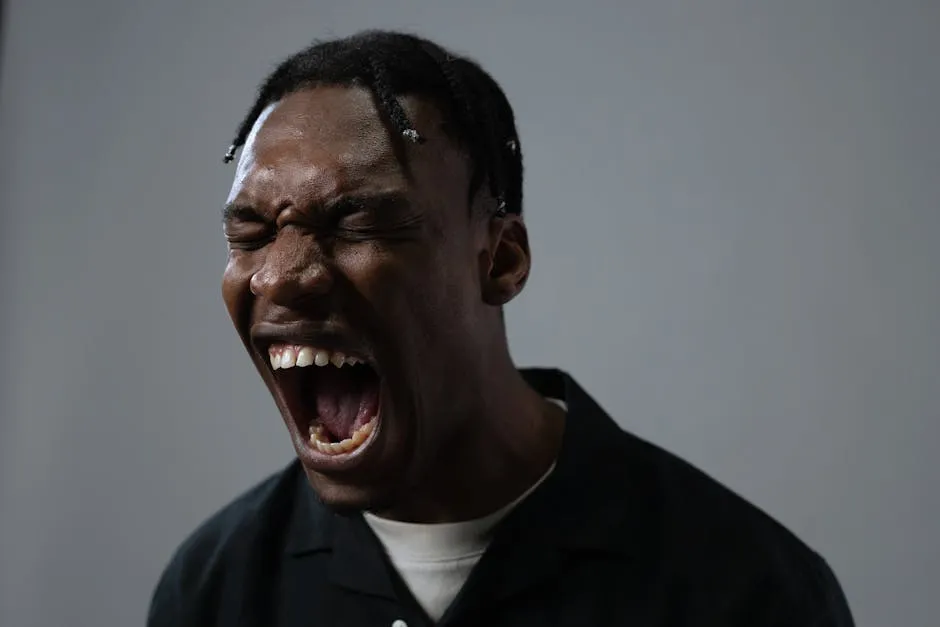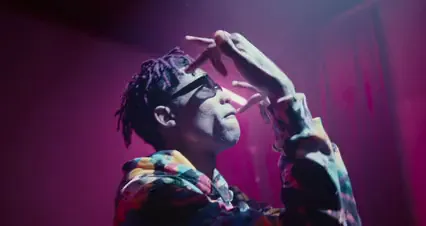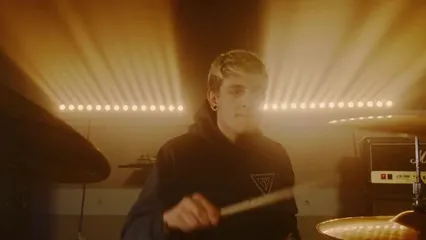
Why Do Many Victims of Abuse Turn to Doom Metal?
Such testimonials highlight the genre’s role in healing. The music’s weighty sound creates a safe space for those grappling with their emotions. For many, it’s not just music; it’s a lifeline, a way to navigate the complexities of their personal struggles. If you want to elevate your listening experience, consider investing in some Heavy Duty Headphones to immerse yourself fully.

Community and Connection
The doom metal scene fosters a unique sense of community among fans. Online forums, social media groups, and concerts provide spaces for connection. These platforms allow individuals to share experiences and support one another.
Attending concerts can be particularly uplifting. Fans gather, united by a shared passion for the music. This collective experience helps diminish feelings of isolation. One attendee remarked, “At the show, I felt like I belonged somewhere.”
The shared narratives within the doom community reinforce healing. Fans often bond over their struggles, creating a powerful network of support. This sense of connection is invaluable for those navigating the aftermath of trauma. Ultimately, doom metal cultivates a welcoming environment, encouraging open dialogue and healing through shared experiences.

Finding Validation and Support
The Role of Lyrics in Providing Validation
Doom metal lyrics often articulate feelings that many abuse survivors find hard to express. The themes of despair, loss, and hopelessness resonate deeply with those navigating trauma. Bands like My Dying Bride and Amorphis craft lyrics that reflect the emotional struggles of survivors. For instance, My Dying Bride’s “The Cry of Mankind” captures profound feelings of grief and isolation.
These lyrics serve as a mirror for listeners, validating their pain. When survivors hear lyrics that echo their own experiences, they feel understood and less alone. The power of music lies in its ability to articulate emotions that often remain unspoken. As the heavy riffs and somber melodies wash over them, fans experience a cathartic release. This connection fosters a sense of community among listeners, allowing them to share their stories. Through this shared experience, doom metal becomes a source of validation and support for many.
For those who want to capture their musical journey, consider a Musician’s Journal to document your thoughts and experiences.

Seeking Professional Help Alongside Music
While doom metal offers solace, it’s crucial to seek professional help as well. Music can be a powerful coping tool, but it should not replace therapy or support systems. Many survivors benefit from talking to mental health professionals who specialize in trauma. Resources like the National Domestic Violence Hotline are essential for those in need.
Therapy provides a safe space to process experiences and develop healthy coping strategies. Combining music with professional support creates a holistic approach to healing. Encourage loved ones to reach out for help, as it is a brave step toward recovery. Remember, while doom metal can provide comfort, professional guidance is vital for navigating the complexities of trauma. Balancing both can lead to a healthier, more fulfilling journey toward healing.

Empowerment Through Music
Music as a Form of Defiance
Doom metal offers a pathway for survivors to reclaim their strength. The heavy, resonant sound can be a powerful tool for confronting pain. When you listen to a slow, crushing riff, it’s like giving voice to your struggles. This genre embodies resilience, allowing listeners to embrace their emotions without shame.
Songs like “The Cry of Mankind” by My Dying Bride resonate deeply. The lyrics articulate feelings of despair, yet they also inspire defiance. This duality encourages survivors to acknowledge their pain while asserting their strength. The music transforms suffering into empowerment, creating a cathartic experience.
Self-expression through music becomes vital for recovery. It provides an outlet for emotions that might otherwise remain bottled up. Engaging with doom metal fosters a sense of community among listeners. Many find solace in knowing they are not alone in their struggles. By facing their darkness head-on, survivors can emerge stronger and more resilient. For added comfort during those intense listening sessions, consider a Musician’s Ear Plugs to protect your ears while enjoying the sound.

The Evolution of Doom Metal’s Cultural Perception
Doom metal’s acceptance has evolved significantly, especially among marginalized groups. Once dismissed as niche, this genre now resonates with a broader audience. The doom metal community has become increasingly inclusive, welcoming diverse voices and experiences.
Themes in doom metal have also shifted. While the music traditionally explored despair and darkness, many contemporary bands now address empowerment and healing. This change reflects a growing recognition of the importance of mental health. Bands like SubRosa and Jex Thoth offer perspectives that highlight resilience and strength.
For those who want to celebrate this evolution, consider displaying some Rock and Metal Posters to showcase your love for the genre.

Please let us know what you think about our content by leaving a comment down below!
Thank you for reading till here 🙂
All images from Pexels
Introduction
Have you ever wondered why some survivors of abuse gravitate toward doom metal? This connection runs deeper than mere preference for heavy music. Doom metal taps into emotional and psychological struggles, offering solace for those navigating trauma. The genre’s heavy sound and intense themes resonate profoundly, creating a sense of understanding and validation.
By exploring this topic, we can uncover how doom metal serves as a powerful tool for healing, community, and expression for abuse victims.
Summary and Overview
In this article, we will explore several key themes highlighting the connection between doom metal and survivors of abuse. First, we’ll discuss the emotional resonance found in the genre’s themes of despair and suffering. Next, we’ll highlight the therapeutic benefits of listening to doom metal, focusing on its ability to provide catharsis.
Community plays a crucial role as well; many find support and validation among fellow fans who share similar experiences. Lastly, we’ll look at how the genre’s slow tempos and heavy instrumentation create a safe space for emotional exploration. Through this examination, we can appreciate why many victims of abuse find comfort in doom metal.

The Appeal of Doom Metal
The Musical Characteristics of Doom Metal
Doom metal stands out for its distinct sound and emotional depth. This genre features slow tempos, often around 60-80 beats per minute. Heavy, down-tuned guitars create a thick, distorted sound. The instrumentation typically includes electric guitar, bass, and drums, with some bands adding keyboards for atmospheric effects. Vocal styles vary but often lean towards clean singing or deep growls, adding to the genre’s intensity.
Lyrically, doom metal explores themes of despair, loss, and existential dread. These topics resonate with listeners, especially those who have experienced trauma. The emotional tonality is dark, matching the heavy instrumentation. Songs often evoke feelings of sadness and hopelessness, making them relatable for abuse survivors. The aesthetic of doom metal, reflected in album art and performances, enhances this emotional connection, offering a safe space for listeners to confront their feelings.
If you’re looking to dive deeper into this genre, why not start with a classic? Check out the My Dying Bride – The Cry of Mankind (CD) for an intense sonic experience.
Lyrical Themes and Their Impact
Doom metal lyrics often touch on profound themes that resonate deeply with survivors of abuse. Common topics include grief, hopelessness, and existential questions. These themes provide an outlet for emotions that survivors may struggle to articulate. For example, the song “Black Winter Day” by Amorphis powerfully captures feelings of despair and isolation.
The use of metaphor and vivid imagery enhances the emotional weight of the lyrics. Many songs articulate pain in a way that feels personal and validating. Music like “The Cry of Mankind” by My Dying Bride captures the essence of suffering with haunting lines that mirror the trauma many endure. This lyrical exploration allows listeners to confront their pain, fostering a sense of connection and understanding. Such resonance can be immensely therapeutic, helping survivors feel less alone in their struggles.
For those who want to explore the broader context of heavy music, consider grabbing a copy of Doom Metal: A History of Heavy Music to deepen your understanding.

Catharsis Through Music
The Therapeutic Nature of Doom Metal
Doom metal acts as a powerful coping tool for emotional release. Its slow tempos and heavy instrumentation provide a space for reflection. Many listeners find solace in the music’s cathartic qualities. This genre allows individuals to confront their feelings, making it easier to process trauma.
The concept of catharsis in music is profound. When you listen to heavy riffs and somber melodies, it creates an environment for emotional expression. Fans often describe feeling understood and less isolated. A listener shared, “Doom metal helped me face my pain instead of running from it.”
Such testimonials highlight the genre’s role in healing. The music’s weighty sound creates a safe space for those grappling with their emotions. For many, it’s not just music; it’s a lifeline, a way to navigate the complexities of their personal struggles. If you want to elevate your listening experience, consider investing in some Heavy Duty Headphones to immerse yourself fully.

Community and Connection
The doom metal scene fosters a unique sense of community among fans. Online forums, social media groups, and concerts provide spaces for connection. These platforms allow individuals to share experiences and support one another.
Attending concerts can be particularly uplifting. Fans gather, united by a shared passion for the music. This collective experience helps diminish feelings of isolation. One attendee remarked, “At the show, I felt like I belonged somewhere.”
The shared narratives within the doom community reinforce healing. Fans often bond over their struggles, creating a powerful network of support. This sense of connection is invaluable for those navigating the aftermath of trauma. Ultimately, doom metal cultivates a welcoming environment, encouraging open dialogue and healing through shared experiences.

Finding Validation and Support
The Role of Lyrics in Providing Validation
Doom metal lyrics often articulate feelings that many abuse survivors find hard to express. The themes of despair, loss, and hopelessness resonate deeply with those navigating trauma. Bands like My Dying Bride and Amorphis craft lyrics that reflect the emotional struggles of survivors. For instance, My Dying Bride’s “The Cry of Mankind” captures profound feelings of grief and isolation.
These lyrics serve as a mirror for listeners, validating their pain. When survivors hear lyrics that echo their own experiences, they feel understood and less alone. The power of music lies in its ability to articulate emotions that often remain unspoken. As the heavy riffs and somber melodies wash over them, fans experience a cathartic release. This connection fosters a sense of community among listeners, allowing them to share their stories. Through this shared experience, doom metal becomes a source of validation and support for many.
For those who want to capture their musical journey, consider a Musician’s Journal to document your thoughts and experiences.

Seeking Professional Help Alongside Music
While doom metal offers solace, it’s crucial to seek professional help as well. Music can be a powerful coping tool, but it should not replace therapy or support systems. Many survivors benefit from talking to mental health professionals who specialize in trauma. Resources like the National Domestic Violence Hotline are essential for those in need.
Therapy provides a safe space to process experiences and develop healthy coping strategies. Combining music with professional support creates a holistic approach to healing. Encourage loved ones to reach out for help, as it is a brave step toward recovery. Remember, while doom metal can provide comfort, professional guidance is vital for navigating the complexities of trauma. Balancing both can lead to a healthier, more fulfilling journey toward healing.

Empowerment Through Music
Music as a Form of Defiance
Doom metal offers a pathway for survivors to reclaim their strength. The heavy, resonant sound can be a powerful tool for confronting pain. When you listen to a slow, crushing riff, it’s like giving voice to your struggles. This genre embodies resilience, allowing listeners to embrace their emotions without shame.
Songs like “The Cry of Mankind” by My Dying Bride resonate deeply. The lyrics articulate feelings of despair, yet they also inspire defiance. This duality encourages survivors to acknowledge their pain while asserting their strength. The music transforms suffering into empowerment, creating a cathartic experience.
Self-expression through music becomes vital for recovery. It provides an outlet for emotions that might otherwise remain bottled up. Engaging with doom metal fosters a sense of community among listeners. Many find solace in knowing they are not alone in their struggles. By facing their darkness head-on, survivors can emerge stronger and more resilient. For added comfort during those intense listening sessions, consider a Musician’s Ear Plugs to protect your ears while enjoying the sound.

The Evolution of Doom Metal’s Cultural Perception
Doom metal’s acceptance has evolved significantly, especially among marginalized groups. Once dismissed as niche, this genre now resonates with a broader audience. The doom metal community has become increasingly inclusive, welcoming diverse voices and experiences.
Themes in doom metal have also shifted. While the music traditionally explored despair and darkness, many contemporary bands now address empowerment and healing. This change reflects a growing recognition of the importance of mental health. Bands like SubRosa and Jex Thoth offer perspectives that highlight resilience and strength.
For those who want to celebrate this evolution, consider displaying some Rock and Metal Posters to showcase your love for the genre.

Please let us know what you think about our content by leaving a comment down below!
Thank you for reading till here 🙂
All images from Pexels




